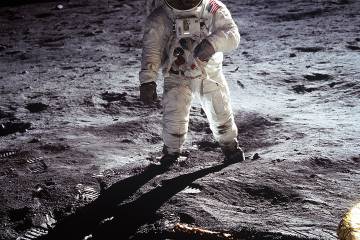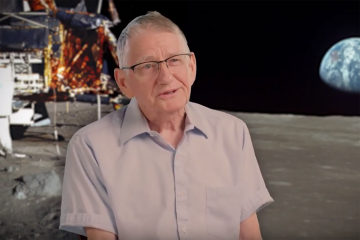Since the dawn of humanity, people have looked up into the night sky, enraptured by the glow of the moonlight. Hanging less than 250,000 miles above the Earth, the moon has inspired artists like Vincent Van Gogh, Ella Fitzgerald, and Georges Méliès, whose lunar works like "The Starry Night," "How High the Moon," and "A Trip to the Moon" represent mankind's collective fascination with the moon and the fantasy world it evokes.

Image caption: Viranga Perera
Viranga Perera, a Johns Hopkins University postdoc and recipient of a Krieger School Dean's Postdoctoral Teaching Fellowship, awarded to qualified postdocs who design and teach their own undergraduate courses, will examine these and other cultural depictions and interpretations of the moon throughout history in a course he will teach this fall, Our Moon: From Imagination to Exploration.
"Of all the humans that have ever existed, most of them have looked up to the night sky and seen the moon," Perera says. "We almost all have this connection to the moon, even if they didn't necessarily know at the time what they were seeing."
A planetary theorist in the Department of Earth and Planetary Sciences, Perera uses physics, chemistry, geology, computer programming, and data analysis to understand the early solar system. What first turned him onto the astronomical plane, he says, wasn't a science class but rather a trip to the movie theater.
"The second I saw Apollo 13, that triggered something in me, and helped me realize this is something I wanted to do with my life," he says.
Using the 50th anniversary of the moon landing as a jumping-off point, Perera has developed the Our Moon curriculum with the hope that art and culture will inspire others the way his artistic encounter with space travel influenced his career path.
The course will include lessons exploring the moon in mythology, art, literature, film, music, politics, and science. The weekly class begins in September, but Perera is also making his research and sources available for open access on his website.
Perera crowdsourced a deep and diverse collection of moon materials for his course. While the site is still under development, lunar aficionados can currently browse through his collection of movie trailers, music playlists, mythology podcasts, art galleries, and more. He also compiled a Spotify playlist of musical works inspired by the moon.
For Perera, the moon is more than just a planetary body to be studied—it's an essential part our lives, something to dream about and aspire to.
"It's right there. It's our neighbor," Perera says. "It's a three-day journey away. You can imagine yourself on it. I think the closeness of it is very special. It belongs to us all."
Posted in Arts+Culture
Tagged music, film, earth and planetary sciences, art











